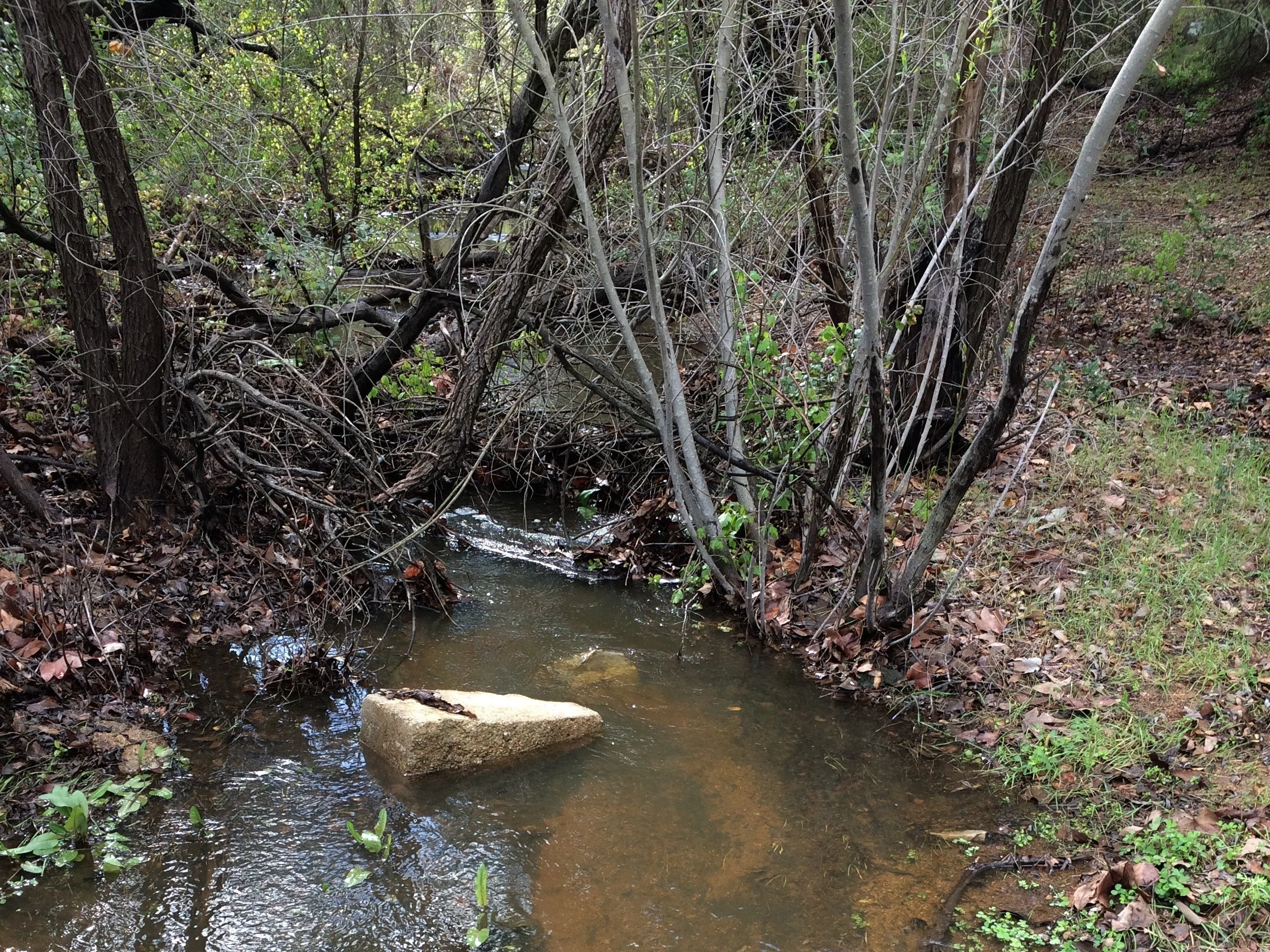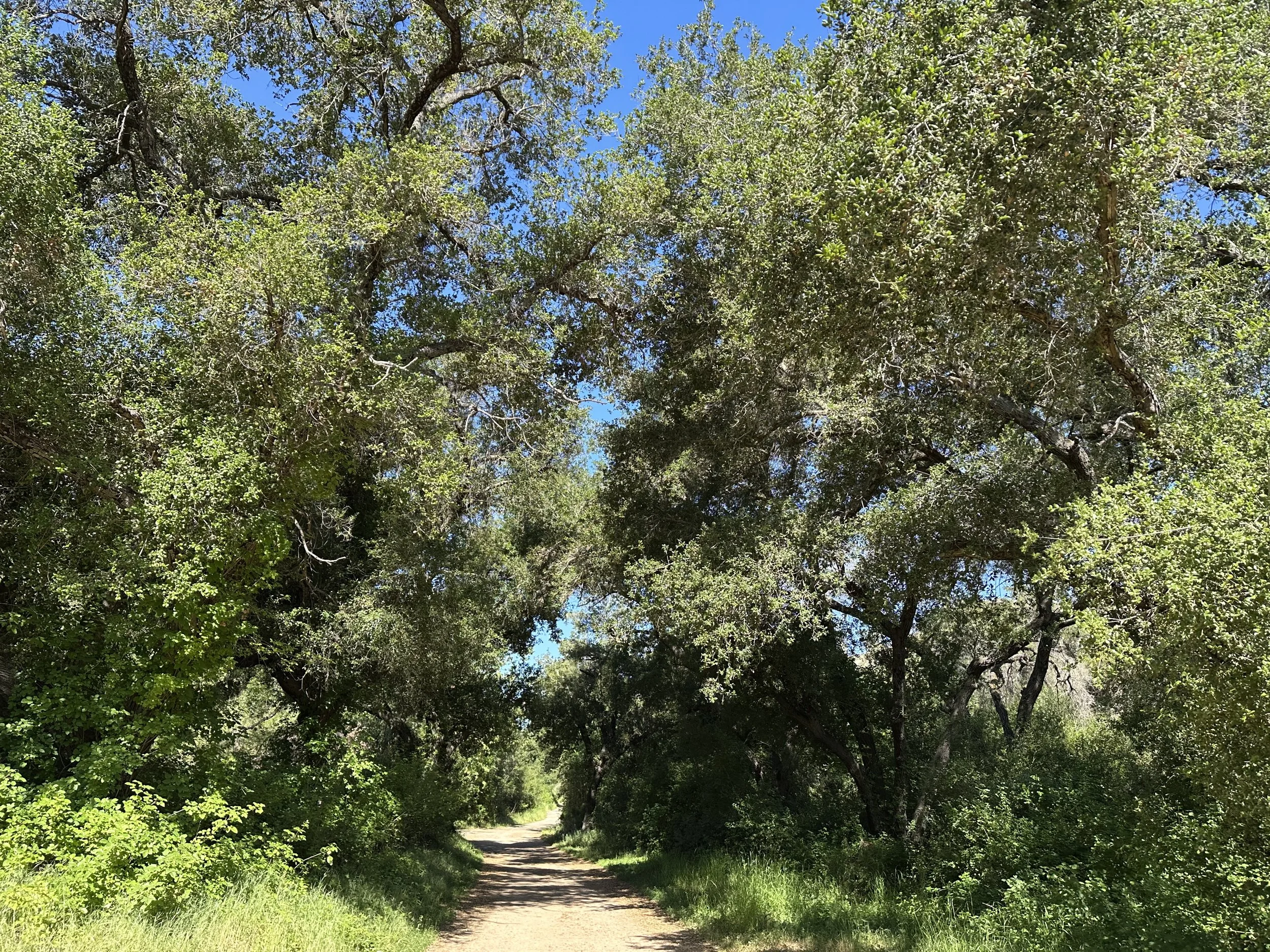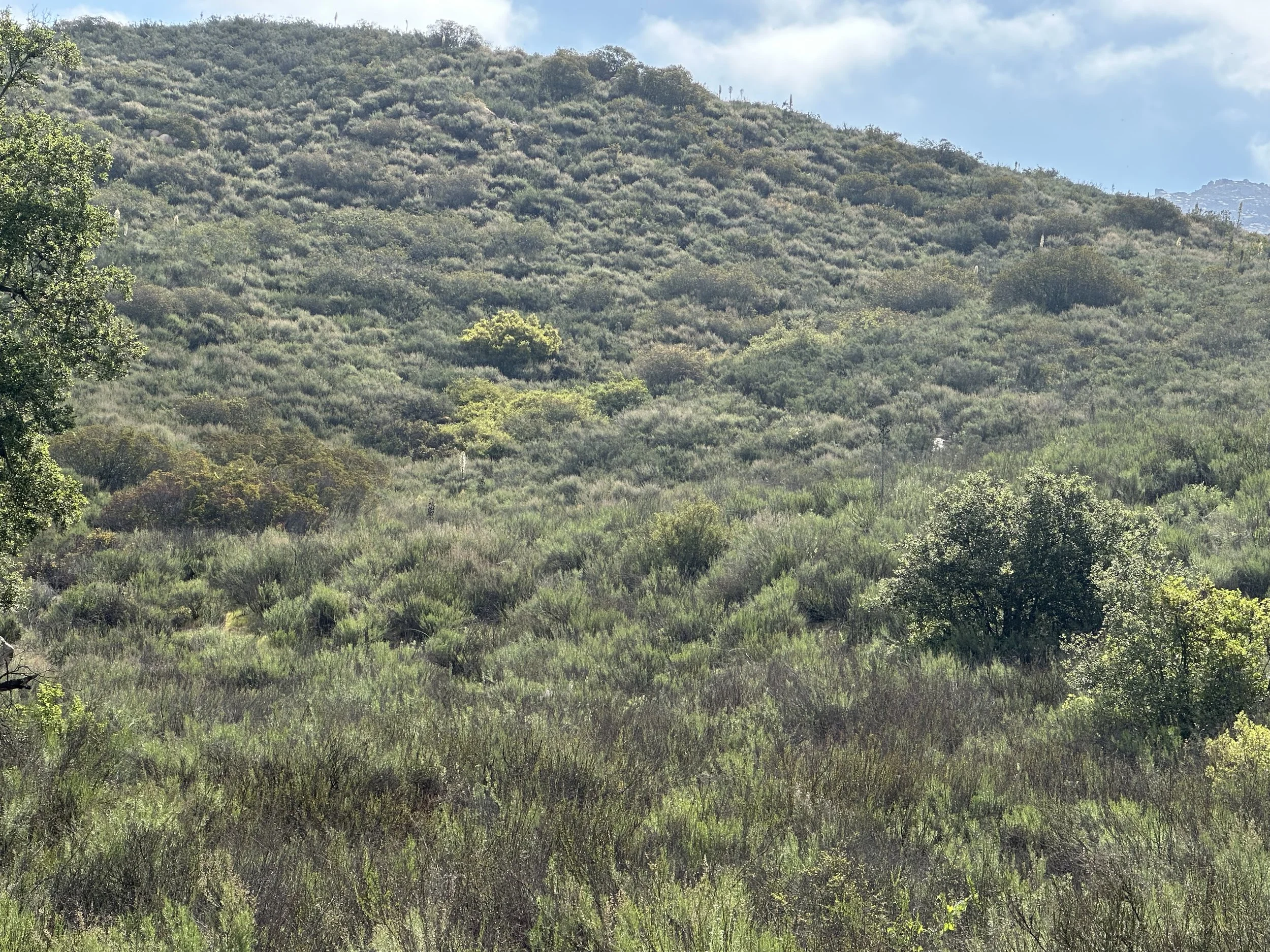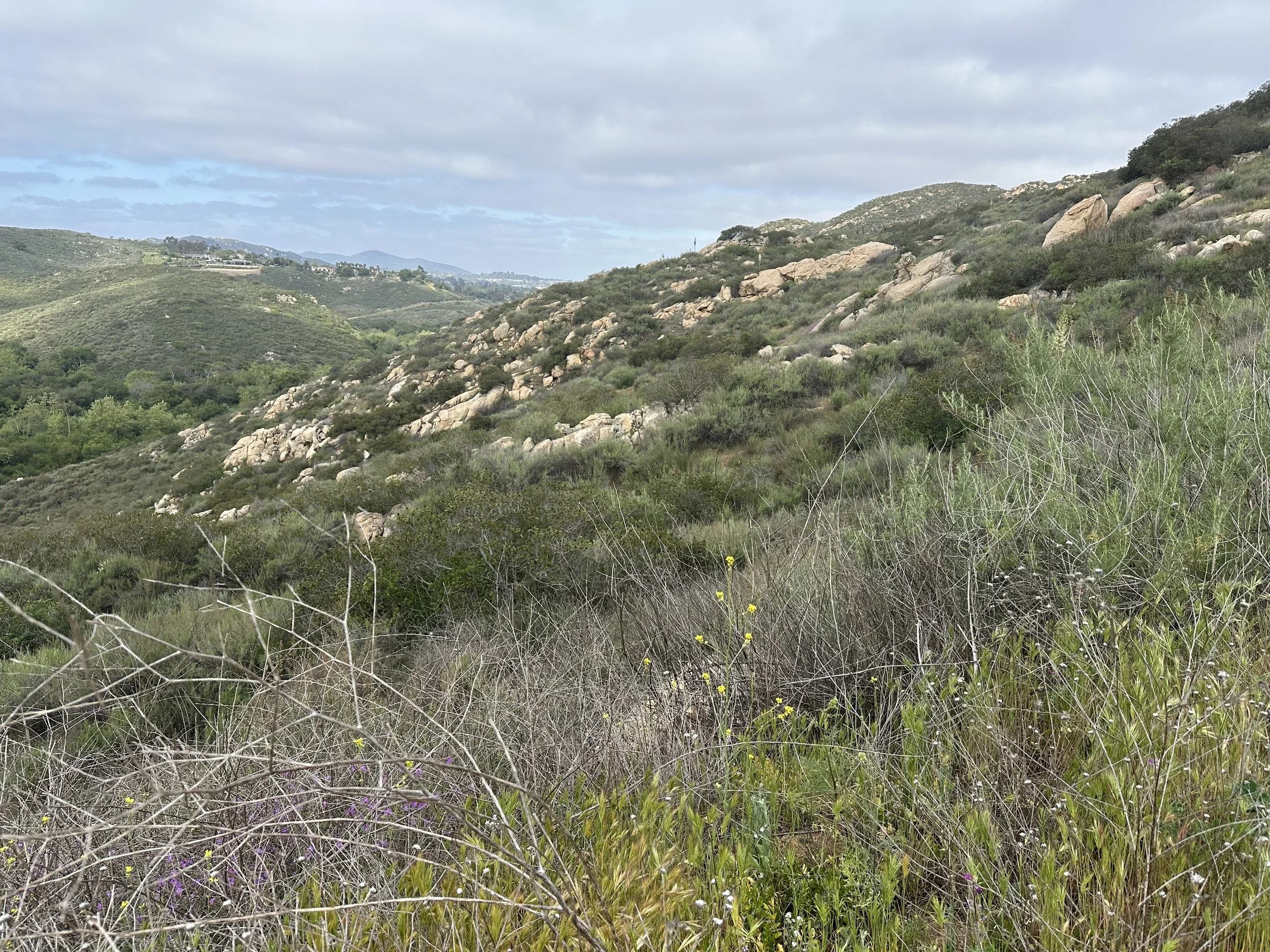The Four Habitats at Blue Sky
Habitats are different types of environments that support associated groups of organisms. Blue Sky Ecological Reserve includes 4 important habitats of coastal California. As a result, it is home to a wide range of plants and animals. Learn to recognize these habitats, as well as the plants and animals associated with them, when you visit Blue Sky.
Riparian
RIPARIAN
In a riparian habitat, there is a stream or underground water near the surface. At Blue Sky, this habitat supports winter-deciduous trees that require water near the soil surface, as well as a dense layer of understory plants. In the photo, you can see the fall colors of sycamores and willows typical of this habitat. The dense vegetation creates shade and thus cooler temperature for wildlife in the summer. In Blue Sky the Riparian and the Oak Woodland habitats are mixed together in some areas.
Oak wooodland
OAK WOODLAND
Coast live oak, up to 60 ft. tall, are the primary species in this habitat. A few grasses and shrubs appear in between the trees. In Blue Sky, oak woodland can be found in valleys, which receive water from surrounding slopes and on north-facing sides of hills and canyons, which are more shaded than south facing slopes. These areas are less drought prone and so favor the growth of oaks and grasses rather than the development of dense chaparral shrubs.
Chaparral
CHAPARRAL
The chaparral habitat is very hard to hike through due to the very dense growth of a variety of woody-stemmed shrubs that can grow up to 13 ft. high. These shrubs are mostly drought tolerant, and often have thick, evergreen leaves. This habitat is adapted to infrequent fire, as many of these shrubs can sprout back from their roots after a fire. Chamise is the dominant species in most chaparral; this habitat is found on 35% of the total property of the reserve.
Coastal Sage Scrub
COASTAL SAGE SCRUB
In this habitat, plants are generally herbaceous or semi-woody, aromatic, narrow-leafed, less than 6 ft. tall and summer deciduous. It is a more open community than chaparral, and easier to walk through. It is more drought prone, as it may receive less precipitation and more sunlight than the chaparral habitat. As this habitat is found below 3,000 ft elevation, it is the most impacted of all local habitats by urbanization. Only 30% of California Inland Sage Scrub remains. This habitat is found on 40% of the total area of the reserve.





